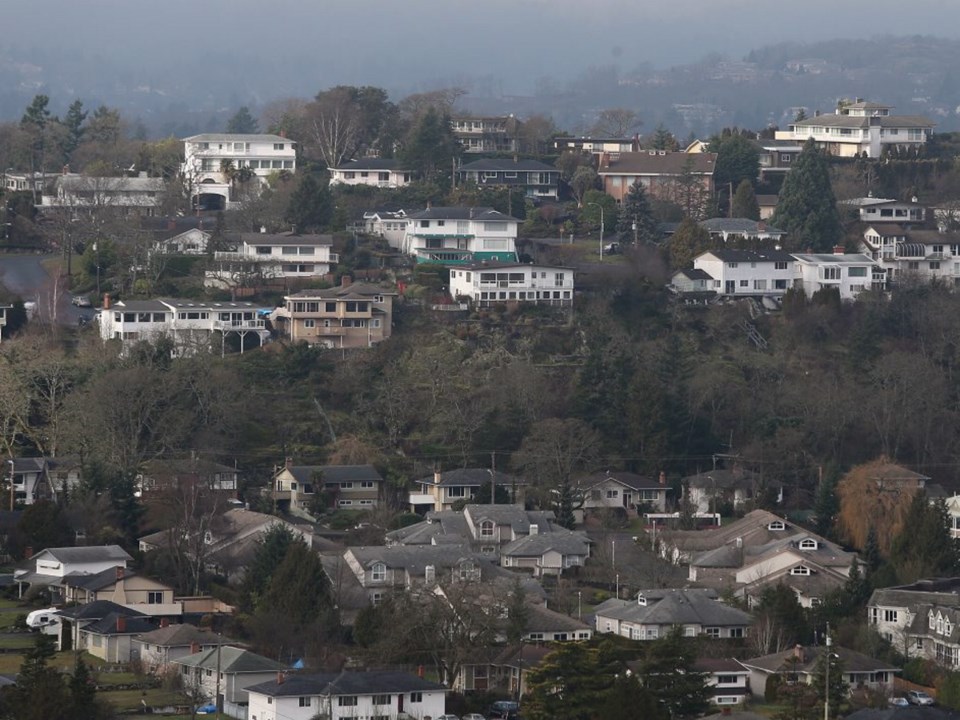Homeowners in Oak Bay, Saanich, Victoria and Sidney are being warned to sit down and take a deep breath before opening their mail the week of Jan. 3.
That’s when B.C. Assessment starts mailing out property assessment notices, and the service is warning homeowners in some parts of Greater Victoria to expect significant increases in their home’s assessed value.
The increase in the assessment of single-family homes in those areas is likely to be between 10 and 40 per cent.
“We’re giving property owners in Greater Victoria a heads-up that the market has been very active over the last year. We’ve seen that in the number of sales, and that will be reflected in the assessment notice,” said acting assessor Christopher Whyte. “It just gives them a heads-up and the chance to ask questions or contact us if they need to.”
Whyte said given the amount of buzz around the region’s hot housing market, it’s unlikely they will catch anyone off guard.
According to the Victoria Real Estate Board’s most recent figures, 10,151 homes were sold in 2016 up to Dec. 1, a 30 per cent increase from the same period last year. The dollar value of sales increased 46 per cent to $5.9 billion compared with 2015.
The board’s benchmark price for a single-family home in the Victoria core last month was $753,800, a 23.9 per cent increase from the same time last year.
All of that plays into the 2017 assessment, which is a reflection of what was happening around B.C. Assessment’s “uniform valuation date” of July 1.
B.C. Assessment takes into account current sales in an area, plus property size, age, quality, condition, view and location.
While increases of 10 to 40 per cent will be typical for single-family homes in Victoria, Saanich, Sidney and Oak Bay, the typical strata residential increase will be in the range of five to 25 per cent.
Whyte said the highest increases will likely be seen most often in Oak Bay.
“I would be surprised if those owners are taken aback too much. Anyone paying attention to sales around them would see that properties are being put on the market at substantially higher values,” he said.
As for commercial and industrial properties, Whyte said increases in the five to 15 per cent range will be typical. “In general, commercial properties won’t see those high-rising or high-dropping markets, generally as a result of having longer-term leases in place,” he said. Commercial building owners also tend not to sell properties as often as residential owners.
Big increases for property assessments do not necessarily translate into big jumps in property taxes.
“It all depends how your actual property assessment changes compared to the average change in your community,” he said, noting municipalities set their mill rates — the amount of tax paid per dollar of assessed property value — to cover their budgets.
“If you look at a stable market or declining market like we saw in 2008-09, the municipalities still needed income, their budgetary requirements were still there.” Even though housing prices dropped or stabilized, most people still got a tax bill that was like the previous year or higher, he said.
He doesn’t expect the increase in valuations will lead to a drastic increase in appeals of property assessments. “What I expect to see is more traffic to our website to get informed. We have an inquiry period in January when homeowners can call our office and talk to an appraiser and discuss the assessment.”
B.C. Assessment’s website, bcassessment.ca, will be updated Jan. 3 with access to all 2017 property assessment information.



